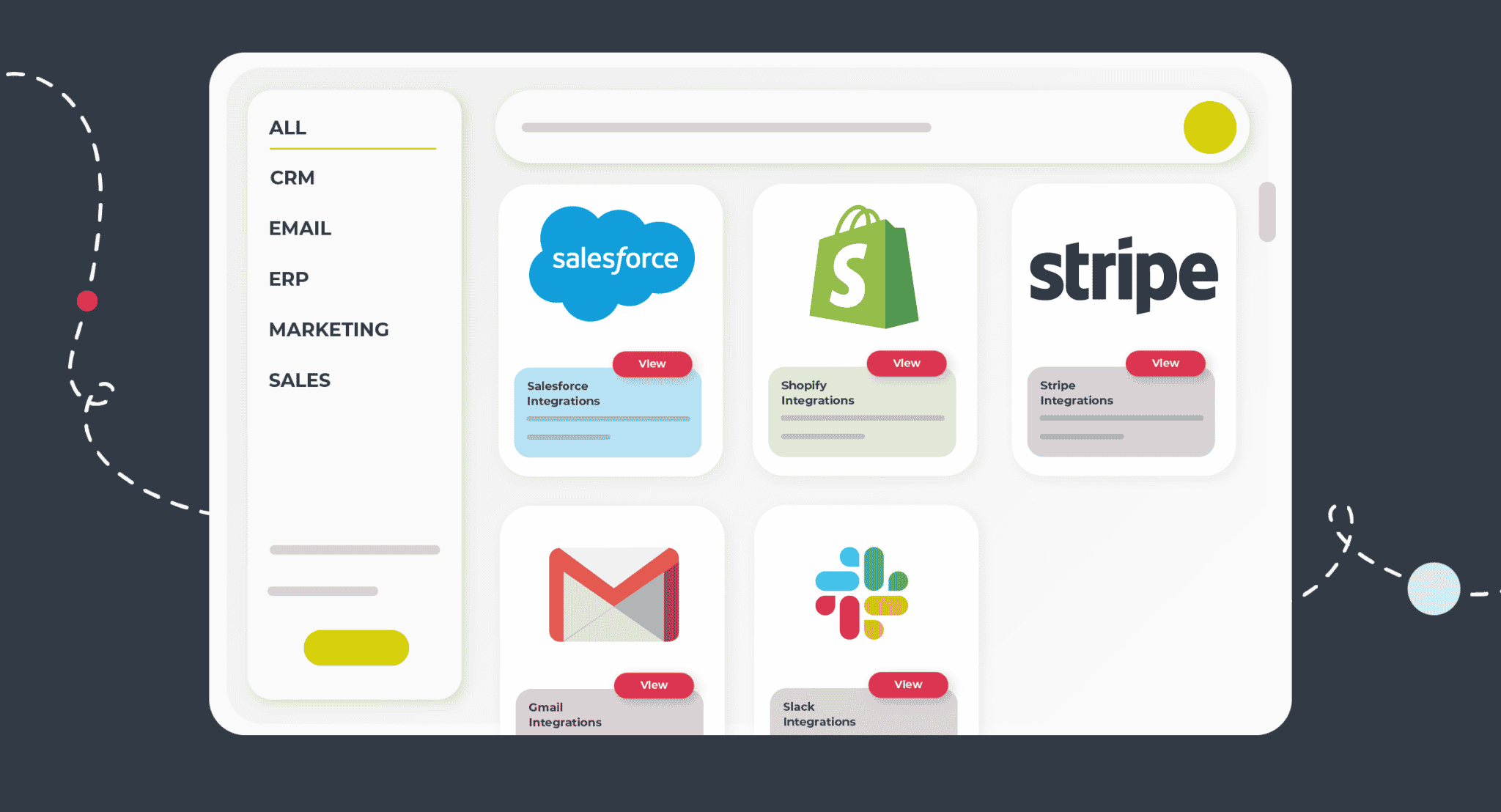
Given the proliferation of SaaS applications and the increasing drive by end-users for interoperability, intelligent SaaS companies are offering more and more native integrations. As well as clever ways for the platforms to interoperate and ‘play nicely. As a result, embedded marketplaces for third-party applications are becoming increasingly common.
What are marketplaces used for?
While the most common usage of marketplaces is typically found in the eCommerce space. SaaS applications have taken to the format for presenting and serving add-ons to their platforms.
Just like the real world, marketplaces provide a unified place to provide products and services from a variety of vendors. From a SaaS perspective, this allows their ecosystem to be enriched by third-party complementary products that enrich the end-user experience.
This provides added choice to end users, allowing them to customise their base platform around their needs. As well as garner more efficiency for their operational setup. The tighter a combination of products and services matches their requirements the more “sticky” the base application becomes to their needs.
SaaS is genuinely no longer a series of isolated (powerful) islands but is becoming a more tightly-knit ecosystem.
Why are they popular?
Common UX
The wide usage of online marketplaces means that users are already used to the format. The familiarity of UI, typically a grid-based layout with categorised options, implies that users will have a better experience. As a result, there will be a higher likelihood that they will make a purchase/installation unencumbered.
The “better the user experience, the higher the conversions” adage is true of this. Why change something that isn’t broken?
Revenue Opportunities
As well as providing a framework to serve products and services, many SaaS are able to charge for these features.
As a result, this creates an additional revenue stream for SaaS companies. They are then able to supplement their own platform subscription with add-ons. This helps to further customise their product to their users’ needs.
Raising profile
One tactic SaaS companies can use to raise their profile is, not only to have their own marketplace but also to appear in other SaaS marketplaces. This could be through creating an integration aimed at improving the experience of a subset of the host’s marketplace users.
With the advantage of gaining exposure to another complementary SaaS audience. It also raises the chances of setting up partnerships which benefit both parties.
SaaS Marketplaces
Saas marketplaces come in several guises, here are a few of the most common.
Plugin Stores
Many large platforms have developer communities which create extended functionality in the form of plugins.
Marketplaces provide a mechanism for developers to publish, publicise and deploy their creations to an active and relevant audience.
Integration Marketplaces
Embedded integration marketplaces are often found directly within SaaS applications. They act as a format to present and provide self-service integrations with a wide range of applications.
Much like plugin stores, many integration marketplaces allow for external, third-party developers to present their solutions to users. While SaaS platforms can use the same format for integration presentation, offering their own solutions. Even providing direct installation (or instructions on how to do so).
SaaS Review Sites
While not directly part of a SaaS they remain the first port of call for users to discover and evaluate platforms before trying them first-hand.
Like all marketplaces, they categorise applications and provide easy access for users to browse applications in a vertical market. Listings are often driven by SaaS directly, being open platforms for them to showcase their offerings. As well as displaying reviews and routes to trial before buying.
Popular sites like Capterra, G2 and Crozdesk use a familiar
marketplace style interface for users to navigate through.
What is MaaS?
A MaaS stands for Marketplace-as-a-Service. As a result of the growth of marketplaces, it has led to the creation of their own classification of SaaS applications. The irony is will we ever see a marketplace application for embedded SaaS marketplace applications?
These solutions provide user-friendly, prebuilt assets for quick and easy styling. At the same time as enabling developers to focus on their core product by simplifying marketplace deployment and management with their external tools.
Cyclr Embedded Marketplace?
So keep an eye out for interesting developments within the Cyclr application itself. We may just have an embedded marketplace function in the pipeline, watch this space.